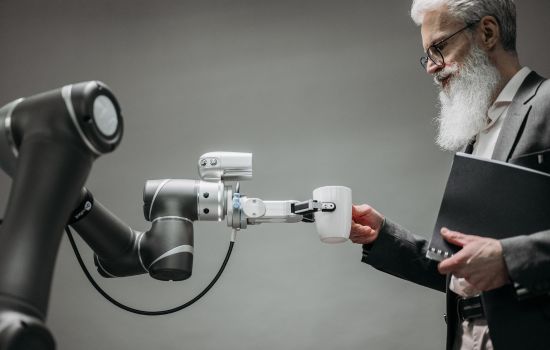robotic technology has advanced by leaps and bounds in recent decades, revolutionizing many areas of society, from industry to medicine and space exploration.
of society, from industry to medicine and space exploration.
Robots are programmable devices capable of performing tasks autonomously. or controlled by humans.
They are becoming more sophisticated and versatile, and can be used in a wide variety of applications.
In industry, robotics have been used to perform repetitive and dangerous tasks. that would be difficult or risky for humans, increasing efficiency and safety on production lines.

Robotics has also been applied in areas such as construction and mining, enabling tasks that require great physical strength or are carried out in dangerous environments.
Used in space exploration
In medicine, robots are used to perform minimally invasive surgeries, allowing patients to recover faster and with less pain.
In addition, robotics has been used in rehabilitation therapies and in the development more sophisticated and precise prostheses.
Robotics have also been used in space exploration, allowing tasks to be carried out in hostile and difficult-to-access environments, such as the surface of other planets
Robots have also been used in underwater reconnaissance missions, allowing images and samples to be taken from areas inaccessible to humans.
As artificial intelligence advances, robotics are becoming more autonomous and able to learn from their own experience.
This allows robots to adapt to new situations and learn to perform increasingly complex tasks.
However, this also raises ethical and safety issues., as autonomous robots can be used for malicious purposes or pose a threat to human safety.
Despite potential concerns, robotics has the potential to transform many areas of society, increasing efficiency, safety and quality of life.
Robotics technology will continue to evolve and improve in the coming years, creating new opportunities and challenges for researchers, developers and users.
The impact of robotics in Europe
Robotics is having a significant impact in Europe, supporting economic growth, increasing efficiency and productivity in many sectors and supporting innovation and technological development.
Europe is one of the main global centers for the development of robotics, with companies and universities that research and develop cutting-edge technologies in this field.
These technologies have been applied in various sectors, from automobile manufacturing to the pharmaceutical and electronics industries.
Robotics are also being used in Europe to address demographic challenges of the continent, such as the aging of the population and the shortage of labor in some industries.
Robotics can help increase productivity and efficiency in areas such as healthcare and social care, allowing services to be delivered more efficiently and cheaply.
Additionally, robotics plays an important role in promoting sustainability and reducing carbon footprint.
Robotics can be used to improve energy efficiency in industrial processes and to monitor and maintain infrastructure such as bridges and roads.
However, robotics also raises concerns about its impact on the labor market., since some jobs may be replaced by robots in the near future.
This can lead to social and economic problems, such as loss of jobs. in some sectors and the need to retrain affected workers.
Conclusion
In general, robotics has a positive impact in Europe, as it encourages innovation, increases productivity and contributes to sustainable development.
However, it is important to closely monitor developments in this area to ensure that the benefits of robotics are shared among the entire society.
